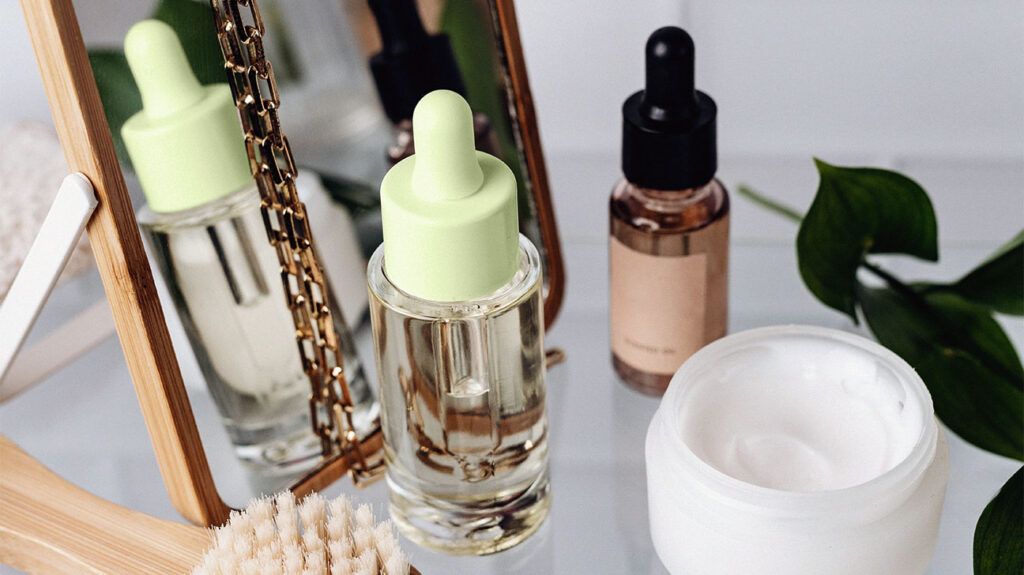Hyaluronic acid is a substance that occurs naturally in the body. Its primary function is to trap water inside tissue cells. People may use products containing hyaluronic acid to help with skin health and signs of aging.
Products that may contain hyaluronic acid include dietary supplements, eye drops, injections, and topical products, such as face creams or serums.
In this article, learn more about the uses and benefits of hyaluronic acid, as well as the possible side effects and risks.

The skin contains about one-third of the body’s hyaluronic acid. Hyaluronic acid binds to water molecules, helping keep the skin hydrated and supple.
As people age, the levels of hyaluronic acid in their skin decrease, which can lead to dehydrated skin and wrinkles.
The
- injections into the knee joints for people with osteoarthritis who do not respond to other treatments
- injections into the skin to target wrinkles or skin folds
- filler injections under the skin to correct volume loss or for augmentation purposes
- topical creams or gels to target wounds, skin ulcers, or relieve symptoms of skin conditions
- as a surgical aid in certain eye procedures, such as cataract extraction
Below, read about the effectiveness of hyaluronic acid for various purposes:
Skin aging
A 2022 review examined the effects of topical hyaluronic acid on skin aging. The researchers conclude it is an effective and well-tolerated treatment after facial or postsurgical rejuvenation procedures.
Research in the review also suggests that hyaluronic acid fillers may extend the effects of Botox injections on skin wrinkles.
A
- improved skin elasticity and tightness
- face rejuvenation, including tear trough rejuvenation
- reducing wrinkles and scars
In a 2021 study of 40 females ages 30 to 65 with signs of skin photoaging, applying topical hyaluronic acid twice a day improved skin hydration. After six weeks, the study participants reported improvements in the following areas:
- skin smoothness
- skin plumping
- fine lines and wrinkles
- skin hydration
- overall skin assessment
Similarly, a
However, it is worth noting that hyaluronic acid’s effects on skin aging may vary from person to person.
Wound healing
Hyaluronic acid may also play a crucial role in wound healing, helping to regulate inflammation.
Research in a 2022 review suggests that topical applications of hyaluronic acid may help with minor wounds, such as burns, or with more severe wounds, such as postsurgical scars.
In a
When using topical hyaluronic acid on wounds, healthcare professionals
Relieving joint pain
Synovial fluid lubricates and cushions the joints. It contains hyaluronic acid. Over time, the hyaluronic acid in synovial fluid breaks down, contributing to joint pain and stiffness in people with osteoarthritis.
The FDA
A 2022 review of 38 studies suggests these injections are generally safe and effective but may cause local swelling and pain for a few days following treatment.
The
In general, hyaluronic acid products appear to be safe when people follow the instructions on how to use them. However,
Hyaluronic acid may also produce adverse side effects and allergic reactions in some people. People should always patch test before they start using a new skin product.
People who receive injections containing hyaluronic acid may experience the following side effects, which should clear up within a week:
- pain
- redness or skin discoloration
- itching
- swelling
- bruising
These side effects are most likely to occur as a result of the injection process rather than the hyaluronic acid solution itself.
In rare cases, people may experience severe side effects, such as infection or tissue necrosis, that require medical treatment.
As the body naturally produces hyaluronic acid, this substance
However, people with a history of severe allergic reactions, such as anaphylaxis, should be cautious when using hyaluronic acid.
Its effects during pregnancy and while breastfeeding remain unknown, so these people should check with a healthcare professional before using hyaluronic acid products.
In general, people should talk with a doctor before trying a new supplement, especially if they:
- take a prescription medication
- are having treatment for an illness
- have a chronic health condition
People can always speak with a doctor about whether hyaluronic acid is right for them.
Hyaluronic acid is a naturally occurring substance that helps retain moisture in the skin and eyes and lubricates the joints. It also plays a crucial role in wound healing by controlling inflammation and redirecting blood flow to damaged tissue.
Hyaluronic acid levels decrease as people age, and this may contribute both to the physical signs of aging, such as wrinkles, and to age-related conditions, including osteoarthritis.
Although hyaluronic acid is present in numerous cosmetic and medical products, its effects can vary from person to person.


